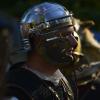Бойно поле отпреди 3200 години, открито в Германия
-
Последна активност
-
- 1866 мнения
- 158807 прегледa
-
- 94 мнения
- 4549 прегледa
-
- 56 мнения
- 1693 прегледa
-
- 1 мнение
- 37 прегледa
-
Руско-украинската война 2022-2024 година. 1 2 3 4 161
От Р. Теодосиев, in Руско-украинската война 2022 година.
- 4012 мнения
- 238520 прегледa
-
-
Последно разглеждащи 0 Потребители
- No registered users viewing this page.




Препръчано мнение
Напиши мнение
Може да публикувате сега и да се регистрирате по-късно. Ако вече имате акаунт, влезте от ТУК , за да публикувате.